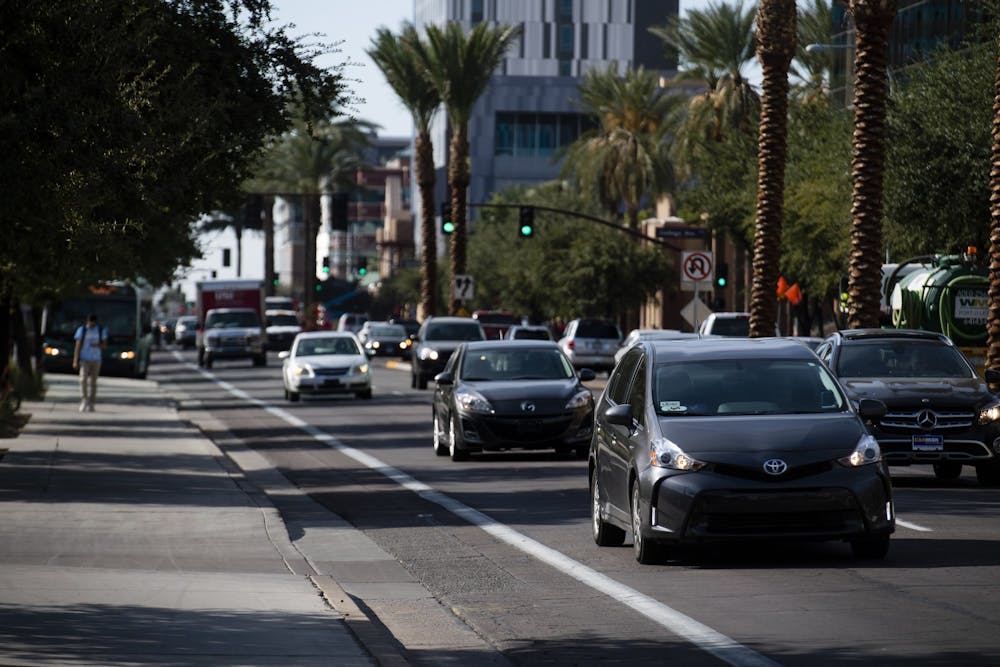The lack of affordable housing options and low availability for students in Tempe has caused anxiety among non-student city residents. The housing issues present challenges for the city as ASU’s student body and city footprint expands.
On Wednesday, Sept. 13, the city council hosted a "Community Conversation" in the Tempe Public Library, where residents were able to present ideas and voice their concerns about affordable housing to city council member Joel Navarro.
At the event, residents raised concerns about students moving into their neighborhoods, causing noise pollution and traffic.
"We used to be a very nice street, a nice residential neighborhood," Stephie Liska, 78-year-old resident who lives in south Tempe, said. "And now, one-third of it is college students."
Navarro said he recognizes their concerns and the impact that ASU students can have on Tempe’s more residential, suburban communities.
"ASU is going to expand, they’re going to get bigger," Navarro said. "How do we get students, if they do live on properties or in student housing, to abide by certain rules and regulations?"
The enrollment on ASU’s Tempe campus has grown by 5,559 students from 2018 to 2022 to over 57,000 students in Fall 2022.
Nolan Williams, co-founder of Tempe Yes In My Backyard campaign, an organization with the goal of increasing the supply of affordable housing in Tempe, said the growing ASU student body and the influx of young professionals in Tempe have depleted affordable housing options and have contributed to the rising prices in the city.
"It’s a situation where we have this extremely restricted supply, ASU keeps getting bigger, people keep moving here, we keep attracting these high-end businesses," Williams said. "When jobs get attracted here, and you have places to live, it becomes very expensive."
The rental vacancy rate in Tempe is 4.1%, nearly two percentage points lower than the state's average. The low metric means there is a low vacancy in the city, meaning fewer units to go around for potential renters. The increasing population of the city means there is a higher demand for these sparse units, creating higher prices.
Tempe Tomorrow: General Plan 2050, which will be voted on in a city-wide referendum in March 2024, is the overarching document that outlines the next thirty years of policy and decision making in the city. The document is updated every decade and includes plans for land use, recreation, transportation, and other improvements for quality of life and community well-being. The U.S. Department of Housing and Urban Development classifies housing as affordable if the household spends less than 30% of their monthly income on housing costs. The general plan states that almost half of Tempe residents are paying above this threshold.
Navarro said the city and ASU need to find ways to accommodate the growing demand for student housing and draw students away from single-family housing. 39% of Tempe’s land is designated for single-family housing, with only 11% designated for multi-family housing, like apartments and duplexes, according to the updated general plan.
"They need to provide student housing. They know they’re growing and getting bigger, it’s an obvious thing," Navarro said. "Is it attractive to have student housing … that is dense? What do they need to make it even more attractive? If I can make something attractive in those areas where they don’t want to be in neighborhoods, what are we missing?"
Edited by Shane Brennan, Walker Smith and Caera Learmonth.
Reach the reporter at pjhogan2@asu.edu and follow @PhineasHogan on X.
Like The State Press on Facebook and follow @statepress on X.




